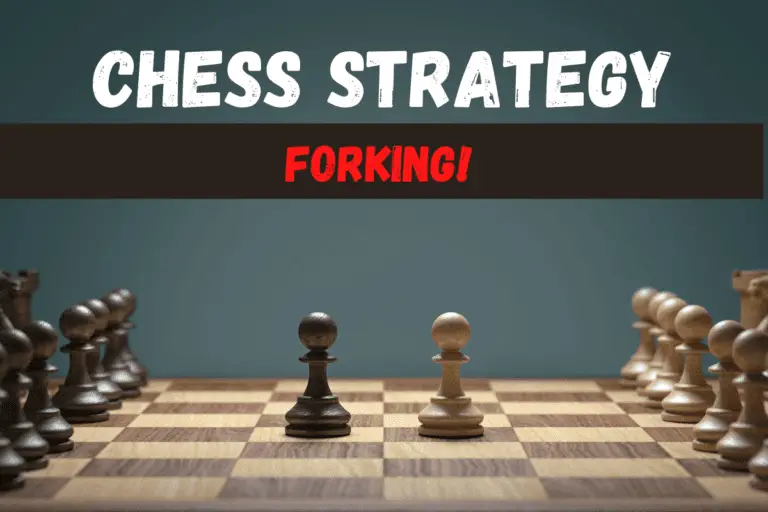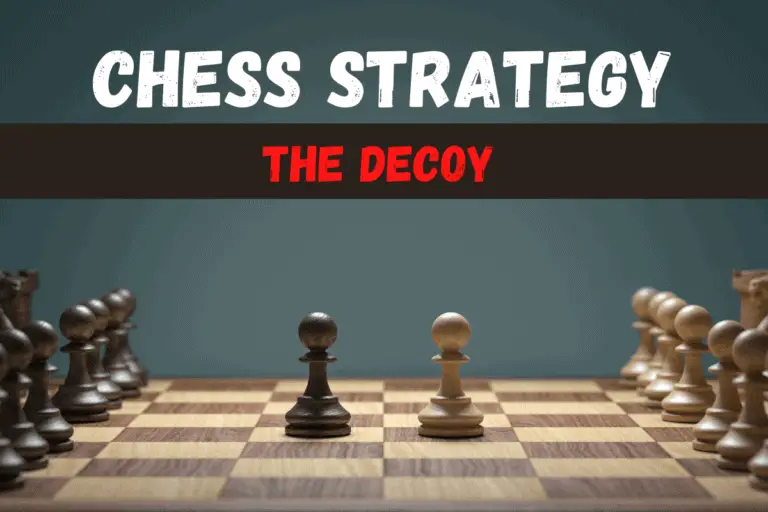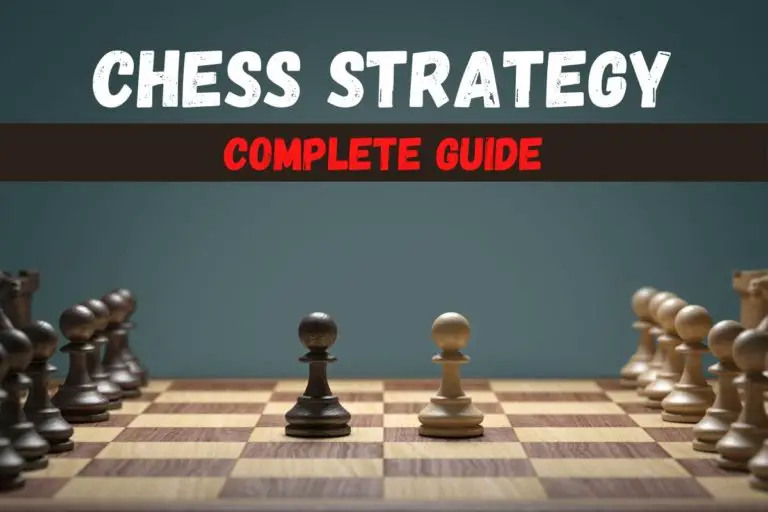Pin in Chess Strategy: (5 Types) Escape, Offense & Defense
⭐⭐⭐ Take 5 minutes to read and improve your chess game ➡️ : This article was first published on, and is Copyright of Chessquestions.com
The game of chess is considered to be one of the most intellectually challenging games in the world. It has a rich history and many complicated strategies that can frustrate even those who have played it for years. One popular strategy in chess is called “pinning.”
Pins are powerful because they restrict the opponent’s pieces from moving, so they must either move out of the pin or lose their piece altogether. In this blog post, we will discuss all about pins: what a pin actually is, 5 different types of pins like absolute and relative pins, how to use them offensively and defensively as well as how to escape from them!
A pin in chess is a position created by the attacking opponent where a minor value piece can not move from its occupied square without exposing a path of capture to a more valuable chess piece. Only Rooks, Bishops and the Queen can ‘pin’ due to their range of movement.
This article will help you with the basic skill in chess of identifying pinning opportunities, how to play them, grab advantage and what to do if you find yourself on the receiving end of a pin in chess. These are basic tactics for now, and easy to learn and get ideas from.
What chess pieces can Pin?
The only chess pieces that can execute a pinning strategy are the Rooks, Bishops, and the Queen. This is due to the unlimited range of movement they have within their specific chess move rules
What chess pieces can not pin?
Pawns, Knights, and the King can not employ a pin on opposing pieces because there are limitations to the distance or number of squares they can progress within the chess moves rules.
What pieces can be pinned?
Any chess piece can fall victim to pinning, with the exception of the king as that would be a check or checkmate situation. Also because a pinned piece is usually of lower value than that which is behind, a queen is not often subject to a pin, but certainly can be in the case of an absolute pin
5 Types of Pin Strategies
There are many ways to create pins in chess, some more advanced than others, here we look at some 5 variations of basic pin strategy
1. Absolute Pin
The most commonly sought out type of pin in chess where the pinned chess piece is shielding the King and is, therefore, unable to move without subjecting the King to a check position. In this case, it is not legal to move the pinned piece
2. Relative Pin
A relative pin is a position where the pin is a piece shielding another, typically but not always of higher value, but not the King. Therefore it is legal to move the pinned piece but not desirable for the loss of the usually higher value piece behind.
3. Cross pin
The queen and the bishop can achieve the cross pin, which is a tactical idea of pinning two separate pieces simultaneously. It can be absolute, relative or a combination of both which happens rarely but is deadly for the victim
4. Situational Pin
When playing a relative or absolute pin, because the defender’s piece is in direct line with the more valuable material it is easy to spot and is a tactical skill. The Situational pin is not so easy as the pinned piece is not directly defending a piece, but is defending a move that would cost him material after his next move.
5. Partial Pin
A partial pin is when the pinned piece is able to move whilst still maintaining a position in front of the higher value piece. For instance, a bishop pinned on a diagonal could move up and down the direct line without exposing the King
How to execute the pin in chess
Finding the pinning situation is usually quite easy. In fact, in many instances you may find you have made a move to attack another piece and only then realize you have pinned another with valuable targets behind – it works out that way sometimes, especially in novice chess games.
Anyway taking a really simple example, let’s imagine that black has the queen still on the first rank [d8] and has a knight a few squares ahead on d5 – You could use your rook and move to the d file.
Your opponent will immediately notice that the knight is under attack and has to consider their options. Of course the knight is not the primary target, the queen behind it is.
The knight is not in immediate danger because it is not en prise because of the queen behind it. White can not capture the knight unless it has defense on the knight’s d5 square. If it does, there could be a rapid exchange go down.
If d5 is not under instant attack, you should try to pressure it and calculate the exchange options and if such a move would result in material value gain.
Pins create undefended squares that at first glance look defended.
Of course, squares that the knight would otherwise be defending are not free for you to utilize in your attack as if that knight was used and the pin ignored, the queen immediately becomes captured.
How to escape from a pin
If you haven’t seen the pin building against you and you find a piece pinned, all may not be lost for the movement of that piece. There are some things you can do elsewhere on the board to ‘un-pin’ your piece.
You may be able to use the pinned piece to make a threat on a greater value piece of your attacking opponent, or a checkmate maneuver even. This would be ideal as you would then be able to capture the piece that began the pin move.
Taking the previous example of the knight between the two queens on the d file, replace the knight with a rook and you have a partial pin which allows you to move your rook right back to the adjacent square of your queen, whereby the pinned piece, remains pinned but is also defended.
Or, chess players could break the pin by moving another of your pieces between the attacking piece and the pinned material, especially if the square that is used you have inadvertently defended too. That would be a real ninja move!
What is the difference between a pin and a skewer?
The difference between a pin and a skewer in chess is that a pin has a chess piece of higher value behind it, whereas in a skewer the pinned piece is the more valuable of the two pieces and the lesser value piece is often captured.
For more information on a skewer attack, like this pin article, head over to the skewer page which highlights all the potential skewer info you could be looking for.
Chess Pinning Summary
Pinning is not advanced chess tactics although there are some more advanced pin tactics that could be employed by professional players in tandem with other strategies. Pins can be very powerful and often a decisive tactic when used correctly against enemy units that are valuable enough for their capture would be advantageous. A careful player may pre-empt the pinning player and try to pin themself!
It provides a great opportunity to create attacks against less opposing pieces. if you can pin more than one opposing piece all the better, your attack could be twice as effective and even fatal.
Now go find some chess puzzles, especially on pinning and try for yourself in setting the pin, and escaping, and soon you’ll be pinning like a champion on the chessboard






